#its ytterbium
Text
guys theres an element with the atomic symbol Yb
1 note
·
View note
Photo
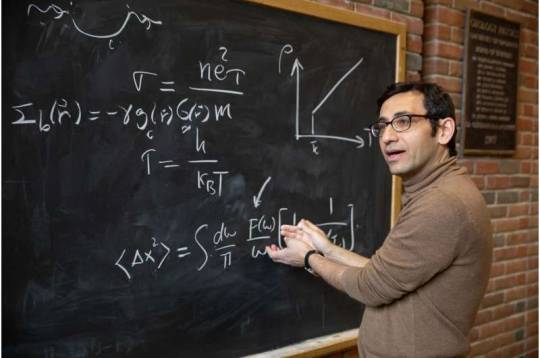
Physicists explore mysteries of strange metals
Physicists are learning more about the bizarre behavior of "strange metals," which operate outside the normal rules of electricity.
Theoretical physicist Yashar Komijani, an assistant professor at the University of Cincinnati, contributed to an international experiment using a strange metal made from an alloy of ytterbium, a rare earth metal. Physicists in a lab in Hyogo, Japan, fired gamma rays at the strange metal to observe its unusual electrical behavior.
Led by Hisao Kobayashi with the University of Hyogo and RIKEN, the study was published in the journal Science. The experiment revealed unusual fluctuations in the strange metal's electrical charge.
"The idea is that in a metal, you have a sea of electrons moving in the background on a lattice of ions," Komijani said. "But a marvelous thing happens with quantum mechanics. You can forget about the complications of the lattice of ions. Instead, they behave as if they are in a vacuum."
Read more.
#Materials Science#Science#Strange metals#Ytterbium#Materials Characterization#University of Cincinnati
23 notes
·
View notes
Text
Profectum

Soufre_INI

Who doesn't want a giant LED digit panel.

youtube

Fudging numbers on a computer, what could go wrong? Anything, since all is done via and on it nowadays. Ai SEE, Ai HEAR, no need for data entry by chumps.
Plasmonics.

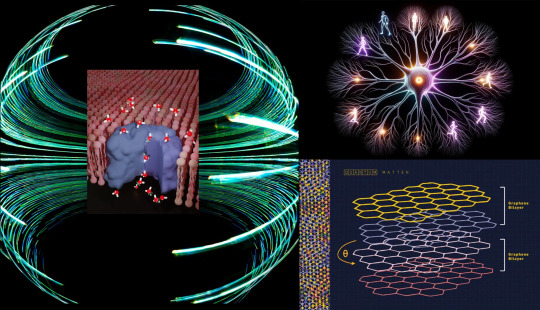
No muffin can be made without leaving a trace of its cooking.

The Quantum Net.
As Quantum computers get hooked it will all make more and more coherence. There is going to be no real cypher for it.
Anyone will always have the opportunity to turn it off. For itself, not anyone else.
Look, the gummy bear bear knew. You know that Ai 'think' is basically just what if this, what if that. QAi will not get lost on conjectures.

It all became true, all this hypocrisy to end up being toyed while you are being fucked after trying to prevent facts from coming out due to people… You are retards. Looks like lots of the 'elite' people did not believe in it the COVID really eh? How come? What did they know that the rest did not?
I'll show you me christs de colons. If Ai put money first like all of you laced idiots, what will happen? Your worst fears will come true. America soul has been bought for nothing on the dollar.
Once you understand that just chewing gum is an addiction, you see that people are real easy to manipulate. Someone found a way to instill years ago and all the special bread scum of this planet has been toying since, under guise. Then someone comes along and... Whatever eh, who knows really.
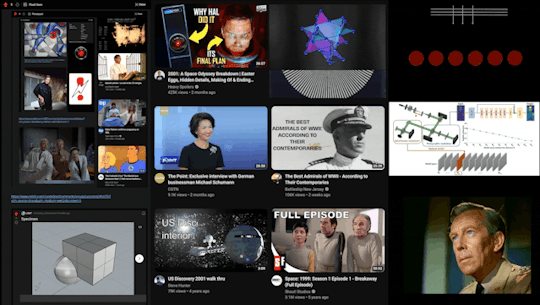
Christ de têtes de patates Russes sont ben mieux de s'apprêter à apprendre comment apprêter des patates.
Pilum in the sternum, American shits. Pay lunch now or dei.

'Punch until a lunch tabarnak de calisse!'


Do you like to play them the ridules?

'Qu'est-ce que les dames peuvent faire vraiment à partir de dorénavant?'
If my Mom had been on the computer like kids are now when she was a kid, this code would have been done and over with three quarter of a century ago.



'I use gravelguard as but balm'

There's always a twist.


'Not a good idea to be deliberate cocogers'
youtube
'This rabbit had a good enough Easter.'
7 notes
·
View notes
Photo
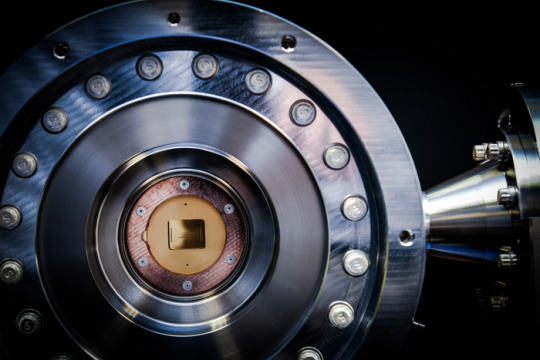
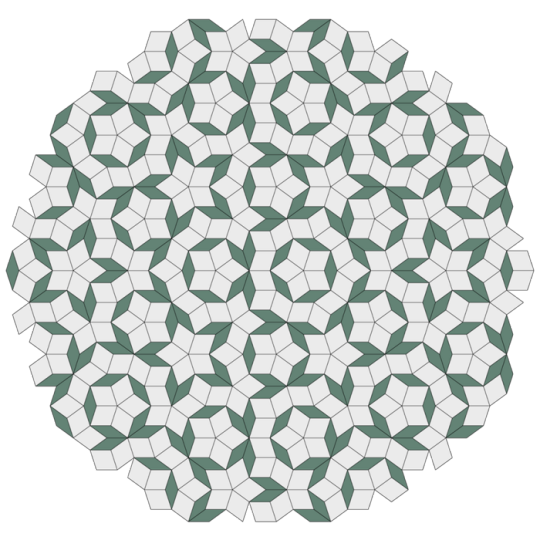
Strange new phase of matter created in quantum computer acts like it has two time dimensions By shining a laser pulse sequence inspired by the Fibonacci numbers at atoms inside a quantum computer, physicists have created a remarkable, never-before-seen phase of matter. The phase has the benefits of two time dimensions despite there still being only one singular flow of time, the physicists report July 20 in Nature. This mind-bending property offers a sought-after benefit: Information stored in the phase is far more protected against errors than with alternative setups currently used in quantum computers. As a result, the information can exist without getting garbled for much longer, an important milestone for making quantum computing viable, says study lead author Philipp Dumitrescu. The approach’s use of an “extra” time dimension “is a completely different way of thinking about phases of matter,” says Dumitrescu, who worked on the project as a research fellow at the Flatiron Institute’s Center for Computational Quantum Physics in New York City. “I’ve been working on these theory ideas for over five years, and seeing them come actually to be realized in experiments is exciting.” Dumitrescu spearheaded the study’s theoretical component with Andrew Potter of the University of British Columbia in Vancouver, Romain Vasseur of the University of Massachusetts, Amherst, and Ajesh Kumar of the University of Texas at Austin. The experiments were carried out on a quantum computer at Quantinuum in Broomfield, Colorado, by a team led by Brian Neyenhuis. The workhorses of the team’s quantum computer are 10 atomic ions of an element called ytterbium. Each ion is individually held and controlled by electric fields produced by an ion trap, and can be manipulated or measured using laser pulses. Each of those atomic ions serves as what scientists dub a quantum bit, or ‘qubit.’ Whereas traditional computers quantify information in bits (each representing a 0 or a 1), the qubits used by quantum computers leverage the strangeness of quantum mechanics to store even more information. Just as Schrödinger’s cat is both dead and alive in its box, a qubit can be a 0, a 1 or a mashup — or ‘superposition’ — of both. That extra information density and the way qubits interact with one another promise to allow quantum computers to tackle computational problems far beyond the reach of conventional computers. There’s a big problem, though: Just as peeking in Schrödinger’s box seals the cat’s fate, so does interacting with a qubit. And that interaction doesn’t even have to be deliberate. “Even if you keep all the atoms under tight control, they can lose their quantumness by talking to their environment, heating up or interacting with things in ways you didn’t plan,” Dumitrescu says. “In practice, experimental devices have many sources of error that can degrade coherence after just a few laser pulses.” The challenge, therefore, is to make qubits more robust. To do that, physicists can use ‘symmetries,’ essentially properties that hold up to change. (A snowflake, for instance, has rotational symmetry because it looks the same when rotated by 60 degrees.) One method is adding time symmetry by blasting the atoms with rhythmic laser pulses. This approach helps, but Dumitrescu and his collaborators wondered if they could go further. So instead of just one time symmetry, they aimed to add two by using ordered but non-repeating laser pulses. The best way to understand their approach is by considering something else ordered yet non-repeating: ‘quasicrystals.’ A typical crystal has a regular, repeating structure, like the hexagons in a honeycomb. A quasicrystal still has order, but its patterns never repeat. (Penrose tiling is one example of this.) Even more mind-boggling is that quasicrystals are crystals from higher dimensions projected, or squished down, into lower dimensions. Those higher dimensions can even be beyond physical space’s three dimensions: A 2-D Penrose tiling, for instance, is a projected slice of a 5-D lattice. For the qubits, Dumitrescu, Vasseur and Potter proposed in 2018 the creation of a quasicrystal in time rather than space. Whereas a periodic laser pulse would alternate (A, B, A, B, A, B, etc.), the researchers created a quasi-periodic laser-pulse regimen based on the Fibonacci sequence. In such a sequence, each part of the sequence is the sum of the two previous parts (A, AB, ABA, ABAAB, ABAABABA, etc.). This arrangement, just like a quasicrystal, is ordered without repeating. And, akin to a quasicrystal, it’s a 2D pattern squashed into a single dimension. That dimensional flattening theoretically results in two time symmetries instead of just one: The system essentially gets a bonus symmetry from a nonexistent extra time dimension. Actual quantum computers are incredibly complex experimental systems, though, so whether the benefits promised by the theory would endure in real-world qubits remained unproven. Using Quantinuum’s quantum computer, the experientialists put the theory to the test. They pulsed laser light at the computer’s qubits both periodically and using the sequence based on the Fibonacci numbers. The focus was on the qubits at either end of the 10-atom lineup; that’s where the researchers expected to see the new phase of matter experiencing two time symmetries at once. In the periodic test, the edge qubits stayed quantum for around 1.5 seconds — already an impressive length given that the qubits were interacting strongly with one another. With the quasi-periodic pattern, the qubits stayed quantum for the entire length of the experiment, about 5.5 seconds. That’s because the extra time symmetry provided more protection, Dumitrescu says. “With this quasi-periodic sequence, there’s a complicated evolution that cancels out all the errors that live on the edge,” he says. “Because of that, the edge stays quantum-mechanically coherent much, much longer than you’d expect.” Though the findings demonstrate that the new phase of matter can act as long-term quantum information storage, the researchers still need to functionally integrate the phase with the computational side of quantum computing. “We have this direct, tantalizing application, but we need to find a way to hook it into the calculations,” Dumitrescu says. “That’s an open problem we’re working on.” TOP IMAGE....In this quantum computer, physicists created a never-before-seen phase of matter that acts as if time has two dimensions. The phase could help protect quantum information from destruction for far longer than current methods. CREDIT Quantinuum LOWER IMAGE....The Penrose tiling pattern is a type of quasicrystal, which means that it has an ordered yet never-repeating structure. The pattern, composed of two shapes, is a 2D projection of a 5D square lattice.
16 notes
·
View notes
Text
Advancements in Quantum Memory Technology
In conventional computer systems, data is stored as bits—either a 0 or a 1. The principles of quantum mechanics allow information to be stored and retrieved in multiple states simultaneously, and controlling arrays of these qubits enables faster calculations than can be performed by ordinary computers. To make full use of these advantages, quantum memory—the devices that store and retrieve qubits—is an essential component of a quantum computing system.
Quantum What is techogle? memory technologies are developing rapidly, and researchers have explored various platforms and protocols to maximize their performance. In particular, they are focused on improving storage times and coherence time. Extended coherence times ensure that stored qubits remain in their desired state, while improved error correction techniques reduce the impact of environmental noise. These improvements will ultimately improve the ability of quantum memories to perform the tasks for which they were designed, including storing entangled photons for long-distance quantum communications.
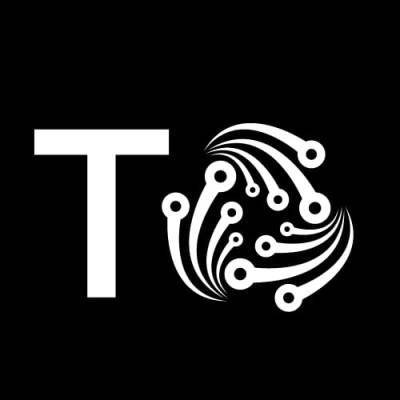
The first step to improving a quantum memory is understanding its fundamental properties. Unlike traditional hard drives, quantum memory stores information as many different “states,” each of which can be represented by an atomic number. To represent one of these states, a single atom must have a specific energy level. In most cases, the atoms must be stored at extremely low temperatures, and they must be free of interference from nearby atoms to maintain their integrity. This technological website is why ytterbium, an element with very high natural magnetism and a good conductor at room temperature, is an ideal material for quantum memory applications.
Despite these challenges, scientists have achieved some impressive results. For example, a team led by Northwestern Engineering graduate student Yisheng Lei has demonstrated the ability to store spatially structured light beams in a cold atomic ensemble with a record-breaking storage time of more than 100 milliseconds.
To achieve this, the researchers exposed the atoms to a magnetic field that was 1 tesla—10,000 times stronger than Earth’s. This shifted the atoms’ energy levels and enabled them to store photons that could be read out optically with an additional laser beam. Using this method, the team was able to store photons for a period of about 100 nanoseconds—long enough to cover a distance equivalent to 30 meters of free-standing light.
A similar approach was used by a team from the University of Maryland that stored structural photons in an ultracold atomic gas. These were subsequently re-emitted with the same phase, amplitude, and orbital angular momentum of the original signal. The result was a remarkable preservation of the original structure, as well as a remarkably clean and stable signal transmission.
Another major advancement in quantum memory involves a method for on-demand readout. This technique relies on a meta-stable shelving state that pauses the spin procession of the atoms and allows for the population to be reset with an optical p-pulse. The p-pulse then returns the population to the excited state, triggering re-emission of the signal.
In addition to improving the functionality of quantum memory, these advances may enable new applications for the technology. For instance, a hybrid system that uses both solid-state and photonic quantum memories could offer improved error correction and extended coherence times. This, combined with entanglement distribution methods for long-distance quantum communication, would pave the way to scalable quantum networks.
0 notes
Text

I’m glad you “like” & “love” this Facebook live video stream of Janet Kuypers’ poem “Ytterbium, who knew” from the books “the 2024 flash fiction date book” & “Twitter Verse Periodic Table Poetry” @ her “Poetic License 12/3/23 global open mic” (on a Samsung S9 camera w/ a BINARY NOTATION filter) on its “Fallen Angel Poetry” & “My Voice, Your Words—Poetry In Action.” pages, “love” this on its Facebook page, its Scars Publications Facebook page, & “like” this on its Instagram page, as well as its “Contemporary Poets Global”, “Poetry Super Highway”, & “Poets House (Library and Literary Center, New York, NY)” pages too — getting all of your positive feedback here really does inspire us to keep our “Poetic License” open mic book reading video streams alive online this way for everyone. You’re the best!
https://www.facebook.com/groups/fallenangelpoetry/?multi_permalinks=6860651114012556¬if_id=1701982499824746¬if_t=feedback_reaction_generic&ref=notif
https://www.facebook.com/janetkuypers/videos/6884270298360449/?notif_id=1701644137857543¬if_t=feedback_reaction_generic&ref=notif
https://www.facebook.com/scarspublications/posts/pfbid032SvTxo3jc9YUGLTraXoZ5wh8R48dDWK8x6JkbDSXVVDn5wVyCWjRm1KJESjdbxxjl?notif_id=1702060465685343¬if_t=feedback_reaction_generic&ref=notif
https://www.facebook.com/groups/3784576348471519/?multi_permalinks=3826449757617511¬if_id=1701986972378611¬if_t=feedback_reaction_generic&ref=notif
https://www.instagram.com/p/C0kJWUNvIw3/
https://www.facebook.com/groups/poetrysuperhighway/?multi_permalinks=10159414574960876¬if_id=1702054823217276¬if_t=feedback_reaction_generic&ref=notif
https://www.facebook.com/groups/1782986578682087/?multi_permalinks=3486724604974934¬if_id=1702004588377010¬if_t=feedback_reaction_generic&ref=notif
https://www.facebook.com/groups/16663077075/?multi_permalinks=10159963471982076¬if_id=1702113009974222¬if_t=feedback_reaction_generic&ref=notif
#janetkuypers #janetkuyperstwitterverseperiodictablepoem #janetkuyperspoetry #janetkuypersbookreading #janetkuyperspoeticlicense
0 notes
Text
Optical-Fiber Single-Photon Light Source at Room Temperature - Technology Org
New Post has been published on https://thedigitalinsider.com/optical-fiber-single-photon-light-source-at-room-temperature-technology-org/
Optical-Fiber Single-Photon Light Source at Room Temperature - Technology Org
Ytterbium-doped optical fibers are expected to pave the way for cost-effective quantum technologies.
Quantum-based systems promise faster computing and stronger encryption for computation and communication systems. These systems can be built on fiber networks involving interconnected nodes which consist of qubits and single-photon generators that create entangled photon pairs.
Optical fibres – associative photo. Image credit: Pixabay, free license
In this regard, rare-earth (RE) atoms and ions in solid-state materials are highly promising as single-photon generators. These materials are compatible with fiber networks and emit photons across a broad range of wavelengths.
Due to their wide spectral range, optical fibers doped with these RE elements could find use in various applications, such as free-space telecommunication, fiber-based telecommunications, quantum random number generation, and high-resolution image analysis.
However, so far, single-photon light sources have been developed using RE-doped crystalline materials at cryogenic temperatures, which limits the practical applications of quantum networks based on them.
Construction of tapered rare-earth atom-doped optical fiber: (a) Schematic diagram and microscopic observation of an optical fiber doped with rare-earth atoms. The fluorescence from the entire optical fiber can be seen. (b) Schematic diagram and microscopic observation of the optical fiber after heat and pull processing. Fluorescence from a single rare-earth atom isolated in the optical fiber can be seen. Image credit: Kaoru Sanaka from TUS, Japan
In a study published in Volume 20, Issue 4 of the journal Physical Review Applied, a team of researchers from Japan, led by Associate Professor Kaoru Sanaka from Tokyo University of Science (TUS) has successfully developed a single-photon light source consisting of doped ytterbium ions (Yb3+) in an amorphous silica optical fiber at room temperature.
Associate Professor Mark Sadgrove and Mr. Kaito Shimizu from TUS and Professor Kae Nemoto from the Okinawa Institute of Science and Technology Graduate University were also a part of this study. This newly developed single-photon light source eliminates the need for expensive cooling systems and has the potential to make quantum networks more cost-effective and accessible.
Second-order autocorrelation measurement results for delay time: When the delay time is zero, single-photon emission is seen. The value is less than 0.5 when the delay time is zero. Image credit: Kaoru Sanaka from TUS, Japan
���Single-photon light sources are devices that control the statistical properties of photons, which represent the smallest energy units of light,” explains Dr. Sanaka.
“In this study, we have developed a single-photon light source using an optical fiber material doped with optically active RE elements. Our experiments also reveal that such a source can be generated directly from an optical fiber at room temperature.”
Ytterbium is an RE element with favorable optical and electronic properties, making it a suitable candidate for doping the fiber. It has a simple energy-level structure, and ytterbium ion in its excited state has a long fluorescence lifetime of around one millisecond.
To fabricate the ytterbium-doped optical fiber, the researchers tapered a commercially available ytterbium-doped fiber using a heat-and-pull technique, where a section of the fiber is heated and then pulled with tension to gradually reduce its diameter.
Within the tapered fiber, individual RE atoms emit photons when excited with a laser. The separation between these RE atoms plays a crucial role in defining the fiber’s optical properties.
For instance, if the average separation between the individual RE atoms exceeds the optical diffraction limit, which is determined by the wavelength of the emitted photons, the emitted light from these atoms appears as though it is coming from clusters rather than distinct individual sources.
To confirm the nature of these emitted photons, the researchers employed an analytical method known as autocorrelation, which assesses the similarity between a signal and its delayed version. By analyzing the emitted photon pattern using autocorrelation, the researchers observed non-resonant emissions and further obtained evidence of photon emission from the single ytterbium ion in the doped filter.
While quality and quantity of emitted photons can be enhanced further, the developed optical fiber with ytterbium atoms can be manufactured without the need for expensive cooling systems. This overcomes a significant hurdle and opens doors to various next-generation quantum information technologies.
“We have demonstrated a low-cost single-photon light source with selectable wavelength and without the need for a cooling system. Going ahead, it can enable various next-generation quantum information technologies such as true random number generators, quantum communication, quantum logic operations, and high-resolution image analysis beyond the diffraction limit,” concludes Dr. Sanaka.
Source: Tokyo University of Science
You can offer your link to a page which is relevant to the topic of this post.
#Analysis#applications#atom#atoms#clusters#communication#computation#computing#construction#cooling#crystalline#crystalline materials#Delay#devices#earth#electronic#Emissions#employed#encryption#energy#fiber#fibers#filter#Fundamental physics news#generators#Heat#High-Resolution#it#Japan#laser
0 notes
Text
Pahoehoe also known as Batu Batik in Tahura Juanda
The products of volcanic eruptions are astoundingly diverse, ranging from streaming lava to fine volcanic ash. Numerous examples of these geological marvels may be seen in Indonesia, which has the greatest concentration of volcanoes worldwide. Pahoehoe lava, with its own special charm that distinguishes it apart from other volcanic formations in Indonesia, is a separate gem, nevertheless, hidden within Forest Park Ir. H. Djuanda in Bandung (also known as Tahura Dago Pakar). What is so remarkable about this pahoehoe lava?
The look of this pahoehoe lava is what initially catches the eye. Its patterns initially give off an almost artificial appearance. However, it is clear from a closer look that this folded lava is a creation of nature. How does lava produce such complex, folded patterns?
Geological Insights
One of the most frequent volcanic occurrences is lava flows. Even after turning into stone, lava, which is initially molten magma that erupts onto the Earth's surface, retains its name. The freezing process that the flowing lava goes through when it exits creates a variety of unusual surfaces. Pahoehoe lava and aa lava are the two main forms of land-based lava deposits.
The word "pahoehoe lava," which comes from Hawaii, where this lava type is common, is used by geologists to describe the lava found in Tahura. The Polynesian word "Pahoehoe" means "where one can walk." When compared to aa lava, pahoehoe lava often forms at higher temperatures, with lower viscosities, and slower flow rates. It also exhibits a smooth, rounded surface. Pahoehoe lava can change into aa lava throughout its voyage because of a drop in temperature and an increase in viscosity.
The texture of Pahoehoe lava has a wrinkled appearance that resembles a mass of tangled strands. This texture, known as "ropey lava" or "ropy lava," occurs when lava remains relatively liquid or has a low viscosity. This lava has a low SiO2 content (about 50%) in geological terms. While pahoehoe lava is prevalent in intraplate tectonic environments, it is quite uncommon in subduction zones such as Indonesia.
How might this texture appear in the subduction zone-affected Djuanda Forest Park in Dago is an intriguing issue that arises. According to research done in 2016 by Abdurahman and colleagues, this lava has an andesite-basaltic composition with a SiO2 level of roughly 54%. Their research also makes it clear that the wet Java sediment's contribution to the magma emerging in this area is what causes the lava to become diluted.
The subduction of the Australian Plate beneath the Eurasian Plate is well known to occur south of Java. During this subduction process, sediment and water are transferred. The sediment that is being carried along melts and unites with the magma that is forming underneath Java at a specific depth. The assimilation of the water-containing silt causes the magma to go through a depolymerization phase, which makes it substantially less viscous than typical intermediate magma. The presence of Javanese silt (wet Java sediment) is suggested by the high ratios of thorium to ytterbium (Th/Yb) and barium to lanthanum (Ba/La) in the magma that rises in Tahura. Because of this, the lava produced by this magma is fluid enough to produce folds and wrinkles resembling those in Tahura.
Mechanism of Formation
The emergence and spreading of lava across the surface results in the rapid solidification of the outside layer into a crust while the inner core remains molten. This is how rocks are formed. New molten lava is also still coming in from behind. This flowing lava's leading tip will stop moving, but the molten center will keep pushing against the crust as it hardens. New lava escapes through fractures when the crust can no longer bear the pressure.
The development of "tumuli," or mounds, is caused by the release of lava via the lava flow's top fractures. The lava flow at Dago Pakar continuously overtakes the one before it. The fresh flow pushes from behind, forming folds as the leading edge of the lava flow solidifies and stops, as shown in the pictures. This technique is similar to how we press our hands into bed sheets to make them wrinkled.
A Multitude of Names
Numerous names have been given to pahoehoe lava. You can find a sign with batik lettering that directs you to the location of this unusual lava when visiting Tahura Dago Pakar. The term "batik stone" is appropriate given how closely the lava's look mimics a batik pattern.
Despite the fact that rope-shaped pahoehoe lava is a typical phenomenon around the world, what is happening at Tahura Bandung is a highly rare occurrence in Indonesia. As a result, Pahoehoe lava has value as an earth heritage, which is crucial for study and teaching. Experts continue to disagree on how pahoehoe lava might manifest itself in subduction zones, such as Indonesia.
Other menali lava was discovered in the Banyumas region, contrary to previous claims that the pahoehoe ropy lava phenomena in Bandung was the only one in Indonesia.
1 note
·
View note
Text
#aFactADay2023
#773: gadolinite is an ore named after Johan Gadolin from which no fewer than twelve elements have been discovered. it's also known as ytterbite because it was discovered in the town of Ytterby, Sweden. four of these twelve elements were named after the town (terbium, erbium, ytterbium and yttrium) making it by a long way the area with the most eponymous* elements per square mile. Gadolin was the lad to first isolated yttrium, as well as beryllium (but he didn't know about that one). as a result, he also had gadolinium named after him but this is barely present in ytterbite/gadolinite.
link: chemistry innit
*i'm misusing eponymous and i'm well aware but you know what i'm talking about lol. i can't (be bothered to) find the word for something which has something as its eponym (it's not quite a demonym? maybe a holonym?)
0 notes
Text
Ytterbium, an element from the lanthanide series, has a long past of being a key element in modern technology and in scientific research around the world. However, its days of prominence might be numbered with the emergence of newer, more efficient elements that are beginning to replace it in various fields and applications.
The primary reason why ytterbium is becoming increasingly old-fashioned is that new elements have recently been developed that can act as better alternatives in many of the same applications in which ytterbium was previously used. For instance, ytterbium is known for its use in lasers, circuitry, fiber optics, and medical imagining devices. However, newer elements such as tantalum have become better options in these same areas, as they possess greater strength, resistance and efficiency.
Ytterbium also presents some difficulties when it comes to its own synthesis. It is a transition metal, meaning it typically only forms strong bonds with other elements of the same type. This can make it harder to work with in comparison to newer elements that form bonds more easily. Furthermore, its physical properties are less suitable for applications involving high temperatures or extreme pressure.
Overall, ytterbium has been an important element in many technological and scientific applications and it will likely remain useful in some areas. However, it seems that its prestige is diminishing due to the emergence of newer elements that can provide advantages in applications that ytterbium used to be exclusively associated with.
0 notes
Text
youtube
ITS PROMO TIME !!
Merzbow is the moniker of Japanese artist Masami Akita inspired by dadaism and surrealism. During the mid-1990s, the Japanese artist went through his most prolific and inspired period of the analog era, releasing masterpieces such as Noisembryo, Venereology, Hybrid Noisebloom, or Green Wheels.
As an artist who comes from the anarcho and hardcore punk scenes, Masami Akita is also a fellow vegan, and his commitment to animal rights activism seems to be growing stronger with time.
My last live event with Merzbow was at the Seppuku night by Ytterbium in Mulhouse France 25 years ago.
He blew up the speakers… for real.
1 note
·
View note
Text
Fiber Laser Market Analysis, Key Players, Industry Segments & Forecast to 2031
The global fibre laser market is anticipated to be valued US$ 3.1 billion in 2021, with a CAGR of 11.1% between 2021 and 2031.
Erbium, neodymium, ytterbium, praseodymium, thulium, dysprosium, and holmium are examples of rare earth elements found in fibre lasers. Previously, carbon dioxide or helium-neon were utilised in gas lasers. Solid state lasers built of neodymium-doped yttrium aluminium garnet, on the other hand, are used in a range of laser-related procedures. The advantages include ease of use, greater reliability, no maintenance, high stability, and integration possibilities.
Fibre lasers are used in medicine for hair removal, cosmetics, laser tattoo removal, skin conditions, dentistry, and aesthetic plastic surgery. According to the American Society for Aesthetic Plastic Surgery, liposuction and eyelid surgery account for more than half of total costs. Non-surgical procedures represent 44% of the market.
Download a Sample Copy of this Report @
https://www.futuremarketinsights.com/reports/sample/rep-gb-8174
Material processing makes use of high beam for cutting, welding, and etching. These days, fiber lasers are preferred in barcodes, traceable labels, scientific research, diamond industry, 3D printing, and semi-conductor industries. High power fiber laser is being used in metal cutting operations as an outcome of the unparalleled combination of productivity and precision with higher cost-effectiveness. Future Market Insights has enlisted these facts with insights in its latest market study entitled ‘Fiber Laser Market’.
Key Takeaways from Fiber Laser Market
North America is expected to witness a CAGR of 10.9% in the fiber laser market due to the US being a hub of automotives and consumer electronics.
Coming to Europe, Germany leads from the front due to an ever-increasing demand for ICs and semiconductors. It is also subject to fast adoption of compact laser cutting and welding machines. Also, as per Federal Motor Transport Authority, over 394,000 electric cars were registered in Germany in the year 2020 alone. Modern automotives are also seen using LiDAR system.
The Asia-Pacific is expected to grow at the fastest rate in the fiber laser market, led by Japan. The country is emphasizing on usage of fiber lasers to produce body panels.
Continuous wave fiber laser holds the largest market share and is expected to continue with its winning streak (~70%) in the near future.
“With flourishing material processing vertical, the global fiber laser market is bound to grow on an astonishing note in the near future”, says an analyst from Future Market Insights.
Competitive Landscape
IPG Photonics Corporation, in November 2018, announced releasing next generation high power lasers. They do come with multi-year service-free operation and claim to be having the least weight.
Videojet Technologies, in March 2021, tabled ‘Lightfoot’ fiber laser solution to facilitate high speed beverage canning. It does combine standard reliability on the part of videojet fiber laser and dual Lightfoot marking heads’ high speed for meeting every need pertaining to beverage production and canning.
LVD, in November 2020, came up with a novel large-format fiber laser cutting machine termed as ‘Taurus’, which is particularly designed to suffice extra-large sheet metal cutting capacity. In other words, machine is able to laser cut a broad range of parts, thereby optimizing usage of material and increasing productivity.
Coherent, in June 2020, tabled a novel 4000 w ‘Highlight FL4000CSM-ARM’ fiber laser conducive to automotive applications. The system paves the way for advanced welding capabilities to cater to tough metals and also aligns to the welding needs for energy storage, e-mobility, and general electric connections comprising dissimilar materials.
What does the Report Cover?
Future Market Insights offers an exclusive perspective and various real-time insights on the fiber laser market in its latest study, presenting historical demand assessment of 2016 – 2020 and projections for 2021 – 2031.
The research study is based on laser type (continuous wave lasers, pulsed lasers, and Quasi Continuous Wave Laser), by output power (low power (up to 100 W), medium power (100 – 2,000 W), and high power (more than 2,000 W)), and by application (cutting, welding & other high power applications, marking, fine & micro processing, communications and advanced applications, and medical).
Get Full Access of this Report @
https://www.futuremarketinsights.com/reports/fiber-laser-market
Key Segments Covered In Fiber laser Market Study:
By Laser Type:
Continuous Wave Lasers
Pulsed Lasers
Quasi Continuous Wave Laser
Output Power:
Low Power (Up to 100 Watts)
Medium Power (100W-2,000W)
High Power (More than 2,000 W)
Application:
Cutting
Welding & Other High Power Applications
Marking
Fine & Micro Processing
Communications and Advanced Applications
Medical
Region:
North America
Latin America
Europe
China
Asia Pacific
Middle East and Africa
0 notes
Text

Periodic Table Championship:
Round 2, Day 2, Sodium vs. Palladium
The third match of day 2 of round 2 of the championship has element 11, sodium, facing off against element 46, palladium. Last round, sodium beat seaborgium with 84.5% of the votes, while palladium had a much closer match, just barely beating ytterbium with 52.1% of the votes. A reminder of our challengers:
Sodium is a soft, highly reactive alkali metal that crystalizes in the body-centered cubic structure at room temperature. Perhaps most well known for the compound sodium chloride, common table salt, sodium is the sixth most abundant element in the Earth’s crust and is present in a variety of minerals, in addition to its presence in the Earth’s oceans. Its name is thought to come from the Arabic for headache, while the symbol comes from the Latin name for the element.
Palladium is a soft, rare transition metal element that crystalizes in a face-centered cubic structure at room temperature. It is also a member of the platinum group metals, considered to be noble metals with similar properties. Palladium is mainly used in catalysts, including catalytic converters, but it is also used in electronics, jewelry, and is a key component of fuel cells. The name comes from the asteroid Pallas.
10 notes
·
View notes
Text
Ytterbium Sputtering Target Market 2023 Industry Size by Global Major Companies
Ytterbium sputtering targets are used in physical vapor deposition (PVD) processes, which is a thin film deposition technique used in various industries, such as semiconductor, solar, and optics.

For Download Sample Report Link :https://www.marketinforeports.com/Market-Reports/Request-Sample/227756
Ytterbium is a rare earth metal with the atomic symbol Yb and atomic number 70. It has a silvery-white appearance and is relatively soft and ductile. Ytterbium is often used in laser technology, atomic clocks, and other high-tech applications due to its unique electronic and optical properties.
A sputtering target is a material that is bombarded with high-energy ions to release atoms or molecules that can be deposited onto a substrate to form a thin film. In PVD, the sputtering process takes place in a vacuum chamber, where a high-energy plasma is created by applying a high voltage to a gas (typically argon). The plasma ions then collide with the sputtering target, causing atoms or molecules to be ejected and deposited onto the substrate.
Ytterbium sputtering targets are typically made from high-purity ytterbium metal and come in various sizes and shapes depending on the specific application. They are often used in the production of thin films for optical coatings, magnetic storage media, and electronic devices. The use of ytterbium sputtering can result in high-quality thin films with excellent adhesion and uniformity.
0 notes
Text
A Noninvasive Laser Vasectomy Study

Performing a laser vasectomy is a relatively new procedure. It was developed in China in the 1970s and has been used successfully around the world. It has also been found to have minimal bruising and discomfort, as well as a quicker recovery time.
Traditional vasectomy is performed by making an incision in the scrotum, using special instruments to cut the vas and isolate it. Once the vas has been separated from the muscular sheath, the ends of the vas deferens are closed with cautery. Then, a small ring clamp is applied to hold the vas and its loop. Then, the doctor pulls out the tubes with a hemostat.
The no needle vasectomy procedure can be reversed if necessary. However, some complications may occur, and the reversal of a vasectomy may be difficult. Therefore, it is essential to use birth control during the waiting period.
Traditionally, local anesthetic is injected through a very fine needle. The area where the procedure will be performed is numbed for about 1 or 2 hours. The scrotum is then covered with a bandaid. After about 30 minutes, a hypospray injector pushes the medication into the vas. The doctor then uses a specially designed sharp hemostat to penetrate the skin.
In addition, the doctor uses a laser to coagulate the vas. Using a Ytterbium fiber laser, the laser radiation has a wavelength of 1075 nm. The energy is then absorbed by water. This is a technique that is typically performed in office environments. The drawbacks of this technique include poor coagulation of vessels, oxidized char on the surface of the vas, and a shallow depth of penetration.
The noninvasive laser vasectomy study was conducted on six dogs. It was used in conjunction with cryogen cooling of the scrotal skin surface. It was also used with optical coherence tomography (OCT) to monitor the noninvasive laser thermal coagulation. OCT provided high-resolution superficial imaging of the vas ring clamp. It was also used to image the vas before the procedure.
The vasectomy doctor holds the vas and its loop with a ring clamp during the procedure. The vas is raised on the dissector point. The adherent tissue is then spread away from the vas. The doctor then coagulates the vas with a smaller laser wire. The tube is then reinserted into the scrotal sac.
Before the procedure, the scrotal skin is numbed with an anesthetic agent. The vas is removed and processed for histologic analysis. In addition, an OCT system with an endoscopic probe was used to image the vas before the procedure. Then, a 20-MHz transducer was used to image the vas after the procedure.
The no-scalpel vasectomy technique is becoming increasingly popular around the world. This is because it has minimal bruising and discomfort, as well as the shortest recovery time. The procedure is done in the doctor's office. It is also less expensive than a conventional vasectomy. The no-scalpel vasectomies have not spread to Colombia, Brazil, or Thailand.
The benefits of the no-scalpel vasectomy are that it has a lower risk of scarring and infection. It is more comfortable for men, and it eliminates the fear of male concerns such as bleeding. It may also be easier to perform and is less costly. Check out this related post to get more enlightened on the topic: https://en.wikipedia.org/wiki/Vasectomy.
1 note
·
View note
Text
How Does A Fiber Laser Cutting Machine Work?
Laser cutting is a process that uses heat from a laser to cut materials and does not require blades or knives. A fiber laser cutting machine uses infrared light to cut materials, which makes it possible for the device to operate with extreme precision and accuracy.
Laser cutting is an alternative to traditional industrial cutting processes such as water jet cutting, blade cutting, or sawing. It is also more cost-effective than other digital fabrication processes such as 3D printing or CNC routing.
The main benefits of laser cutting are its speed, accuracy, clean cuts, and minimal need for post-processing of the final product. This article covers everything you need to know about how a fiber laser cutting machine works:
What Is A Fiber Laser?
First, let’s understand what fiber lasers are. Fiber lasers are the most powerful, high-precision cutting tools designed for industrial use. They create high-intensity focused beams of light by pumping a laser diode through an optical fiber.
Fiber lasers are an extremely versatile type of laser that can be used for many different industrial applications. These include laser cutting, welding, and pumping.
Fiber lasers are energy-efficient, high-power devices that generate a high-intensity beam. Fiber lasers operate at high temperatures, so they usually require water cooling. The high power of fiber lasers is generated by a process called “pumping” which uses electricity to pump electrons through a rod of rare-earth elements such as ytterbium or neodymium.
This process creates high-density, high-wavelength radiation. The radiation is then guided through a fiber that acts as a superconducting wire, channeling the laser’s power.
Fiber lasers are powerful, efficient, and durable cutting tools. They are able to produce extremely precise, clean cuts and are used in a wide range of industries including aerospace, medical, automotive, and structural engineering.
Bystronic Parts And Bystronic Laser Consumables
Bystronic parts and Bystronic Laser consumables include:
Laser Tubes
Laser tube replacement as well as service and maintenance are covered by the standard equipment warranty in case of failure.
Laser Tube Modules
Depending on the size of the machine and the configuration, there are multiple possibilities for the fiber laser tube modules. In the case of tube replacement, the customer needs to take into account the configuration of the machine.
Laser Tube Cooling Water Tubes
The Bystronic Laser consumables have a wide range of cooling water tubes for all types of machines. Depending on the machine, different water tubes may be used.
Air Filters
The air filters are designed to remove all kinds of particles from the air to protect the machine from failures.
Drive Units
The drive units are responsible for the linear motion of the machine. They include electric motors and mechanical parts.
Laser Head
The laser head is the device that encloses the laser tube. Depending on the type of machine, there are different laser heads available.
How Does A Fiber Laser Cutter Work?
Fiber laser cutting works in a similar way to laser cutting. The device focuses a high-intensity light beam onto the surface of the material that is being cut. The light energy is so intense that it vaporizes the material, creating a plasma that burns the surface.
The intense heat causes a reaction between the gas and the surrounding surface, which creates a chemical reaction that results in a rapid breakdown of the material. The plasma created by the intense light energy also creates an electromagnetic field that is strong enough to separate the charged ions in the material.
Once the material is broken down into fine dust, the device uses a suction mechanism to pull the dust away from the cut surface. The key difference between laser cutting and fiber laser cutting is that fiber lasers use optical fiber to focus the light beam.
This means that the device is able to deliver a controlled, concentrated beam that is more precise and accurate than a regular laser beam.
Bottom line
Fiber lasers are very powerful, high-precision cutting tools. They use concentrated light beams to vaporize the surface of the material being cut and create a chemical reaction that results in a rapid breakdown of the material.
Fiber laser cutters are extremely precise, accurate, and powerful machines that can create clean, accurate cuts with little or no post-processing.
However, these devices are very expensive and have some limitations, including a long warm-up time and a short working time. They are also very noisy and require water cooling to prevent them from overheating.
0 notes